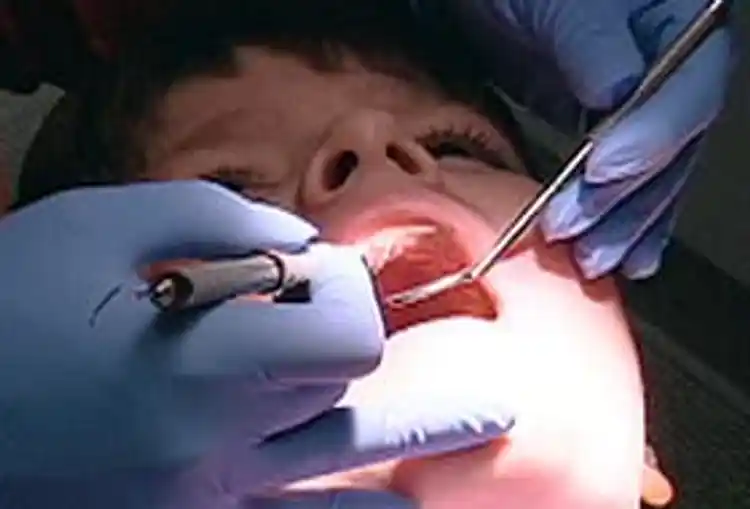Dangers of Gum Disease

Hide Video Transcript
Video Transcript
Narrator
It's often hard to avoid tantalizing your sweet tooth! And while you might fret about your waistline, your dentist is more worried about your smile…and not just because of cavities. Solomon Cohen, DDS
The mouth can reveal a lot about a person, their overall health, their nutrition. Solomon Cohen, DDS
Poor oral health can affect your ability to chew and digest food properly…and that can keep your body from getting the very nutrients it needs to keep your teeth and gums strong and healthy. The problem starts with plaque, a sticky colorless film of bacteria. If plaque is not removed from the teeth every day by brushing and flossing, it will thicken and harden into tartar. A buildup of tartar then inflames the gums, potentially causing them to bleed. Bleeding gums are a sign of gingivitis, a form of early periodontal disease. Almost half of American adults have some form of periodontal disease—many don't even know it. Yet if left unchecked it could lead to receding gums and gum pockets, bone deterioration, and finally, tooth loss. In fact, periodontitis, the most severe form of gum disease, is the leading cause of tooth loss in adults. Certain diseases, like cancer and diabetes, can raise one's risk for periodontal disease. As can hormonal changes during puberty, pregnancy and menopause. Women should work carefully with their dentist during these times to keep their sensitive gums healthy. Studies have also suggested gum disease might be a risk factor for pre-mature, low-birth-weight babies, diabetes, heart disease and a host of other conditions. However more recent studies have cast doubt on some of those connections and more research is underway. The good news is that gum disease is easily prevented. Get regular dental checkups and a professional cleaning at least twice a year, and brush your teeth twice a day…carefully…with a fluoride toothpaste for a full two minutes. And don't forget flossing! It's once a day, at least 5 days a week. Steve Drescher, DDS
I've asked some patients to show me how they floss and they just flick, flick. You just don't get the floss in and out, I mean actually when you get the floss in, you want to wrap around the tooth and go up and down a couple of time just to give like a scrubbing motion and then you wrap around the back of the next one. Narrator
Change your toothbrush often, at least every three months, and whatever you do, don't share! Periodontal disease can spread through direct contact. And if you smoke, stop. The CDC says smokers have 4 times the risk of developing gum disease than non-smokers. For WebMD, I'm Sandee LaMotte 